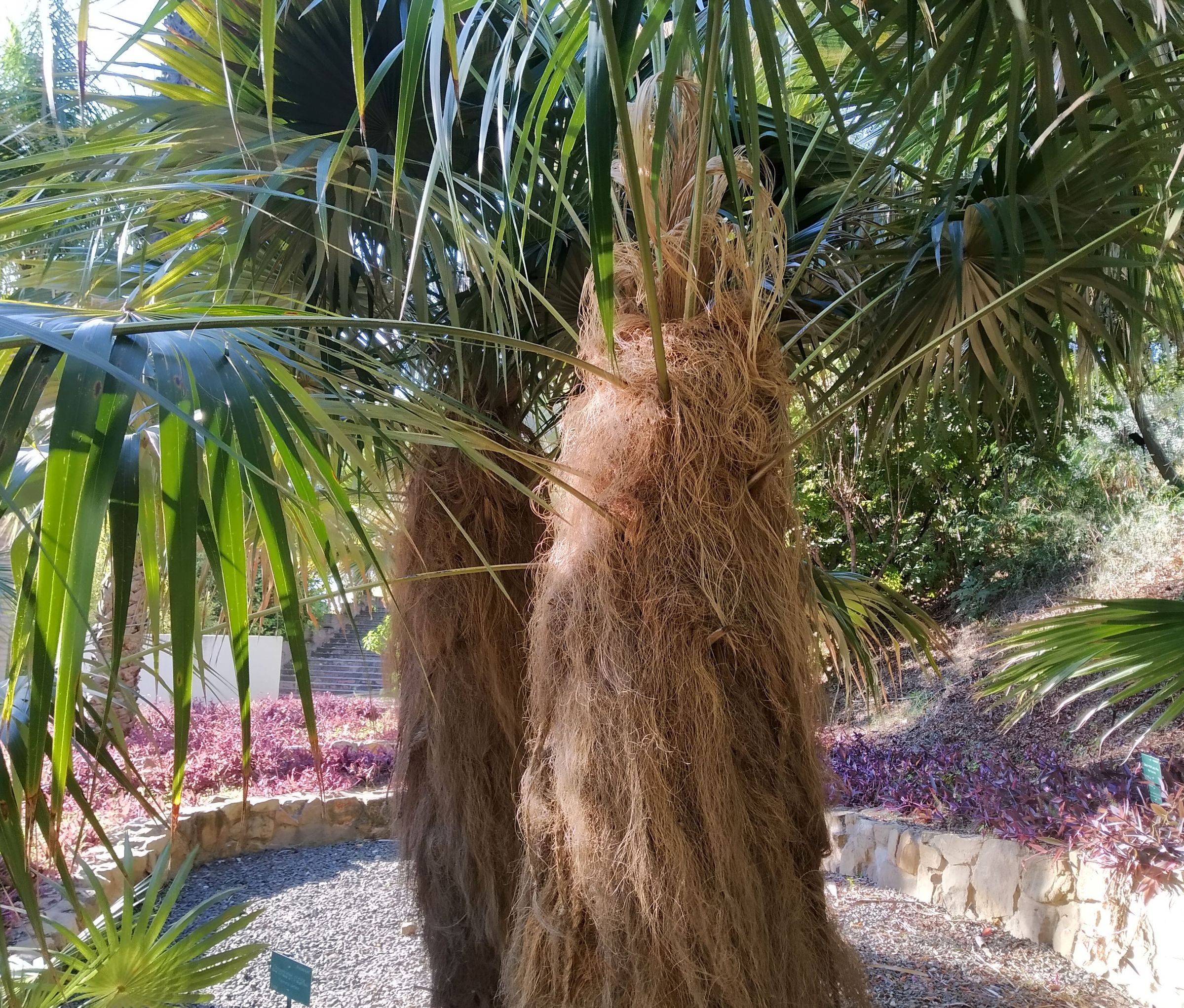Coccothrinax crinita
Scientific name: Coccothrinax crinita (Griseb. & H.Wendl. ex C.H.Wright) Becc.
Family: Arecaceae
Common name: Old Man Palm, Thatch Palm
To many people all palms look the same; but in La Concepción, with more than 70 different species, you can see that this is not the case. There are some very curious and singular ones, such as the one we are dealing with; we are going to look at one that is endemic to Cuba, native exclusively to that country, where it is known as guano barbudo or guano petate.
This palm has a truly original trunk, as it is covered with abundant long, light brown fibres, the product of decomposed pods, which gives it a very "hairy" appearance. The diameter does not exceed 20 cm, but it appears to be much thicker because of all the hair that surrounds it; it can reach a height of 10 m in old specimens in its natural habitat, but it is very slow growing. The leaves are palmate, fan-shaped; bright green on the upper side and more greyish on the underside, with stiff, somewhat pendulous segments at the end. The flowers are small and cream-coloured, grouped in inflorescences shorter than the leaves; we have never seen them in flower at La Concepción.
The name of this genus derives from the Greek Kokkos, which means berry, referring to its small, globular dates; and Thrinax, another genus of palms which they resemble. The species name means hairy (reminiscent of a horse's mane).
It grows well in semi-shade or full sun. It is very hardy, and tolerates drought, salinity and chalky soils well. There are few specimens left in the wild, so it is considered to be at risk of extinction, but fortunately it is cultivated in many places for its ornamental value. In its place of origin it has been used for roofing, as is common with most palms. At La Concepción there are three specimens in the palm collection and one in the historic garden, near the Triton pond.

